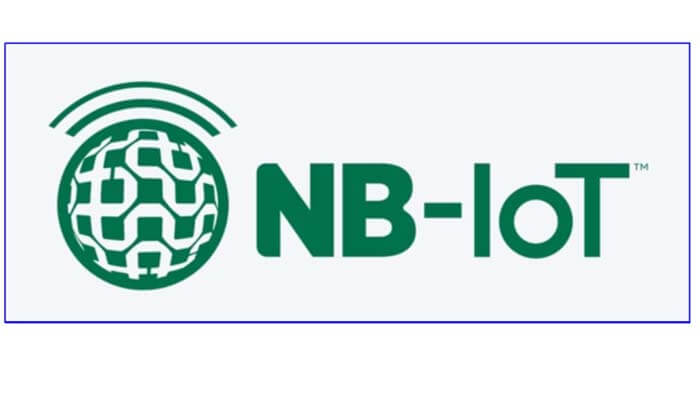When choosing an LTE standard

When you design a cellular IoT product, you must plan for connectivity from the start. Soon, you’re faced with a tough choice: choosing an LTE standard. Which 4G LTE or 5G NR standard should you design for? The answer will determine the direction of your connectivity technology, from which chipsets and modules to use to the mobile network operators you work with.
If you’re designing for large-scale IoT deployments, from smart meters to wearable consumer devices to industrial self-driving cars, LTE cellular networks give you four options.
These may change as 2030 approaches, with 4G LTE networks giving way to 5G New Radio [NR]…but we’ll discuss this shift and its impact on device manufacturers in another post.
For now, read on for tips on which LTE standard will provide the most value for your products, including common use cases for each.
4 LTE Standards for the Large-Scale IoT
Today’s massive IoT connectivity ecosystem offers these LTE standards, each for a different scenario. Here is a selection of today’s choices, along with some standard applications for each:
IoT LTE standards 1. LTE Cat 1
Long-Term Evolution (LTE) networks specify size limits for data as it travels through cellular networks. In 2008, the standardization authority 3GPP released version 8, which defines specifications for user equipment (UE) into five categories.
The first of these categories – LTE Cat 1 – defined a maximum data transfer rate of 5 megabytes per second (5 Mbps UL) for uploads and 10 Mbps for downloads (10 Mbps downlink).
This makes LTE Cat 1 the first standard designed specifically for the Internet of Things, which typically requires lower data rates than the Netflix streams available on cell phones.
You might think that the standard, which first appeared in 2008, is outdated. In fact, the opposite is true: Because LTE Cat 1 is a mature technology, it is largely available everywhere, and it offers enough data throughput to support a wide variety of use cases.
This is not always the case, and we will discuss the third and fourth items on that list in our coverage of NB-IoT and Cat-M.
IoT LTE Standard 2. LTE Cat 1bis
The IoT LTE standard LTE Cat 1 module uses two antennas. For device manufacturers looking to save space or cut costs, one antenna may be more appropriate. Enter LTE Cat 1bis, which is essentially a version of the LTE Cat 1 standard (5 Mbps UL and 10 Mbps DL) on single-antenna hardware.
Cat 1bis modules may lose some coverage compared to dual-antenna modules, but this difference rarely translates into the user experience.
When the first manufacturer of an LTE platform optimized for Cat 1 performed field tests, they found that the single antenna lost only a few decibels of coverage compared to the dual-antenna Cat 1 module and that the platform’s advanced signal processing techniques mitigated this loss.
In addition, cellular networks are often constrained by uplinks, resulting in little or no difference being perceived by customers using one or two antennas, as reported by millions of customers using only one antenna in real-world deployments.
This demonstrates the relevance of a Cat 1bis-optimized platform in providing nearly equivalent Cat 1 performance while offering cost improvements. Finally, it is important to highlight that any Cat 1 network can be enabled with Cat 1bis devices without any network changes or upgrades.
All this makes LTE Cat 1bis an excellent choice for smaller devices with moderate data requirements (including voice or video data).
Common IoT use cases for LTE Cat 1 and LTE Cat 1bis
Since LTE Cat 1 and Cat 1bis use essentially the same baseline specifications, they cover the same types of applications. The difference is whether a single antenna design is better suited for your product because it saves space or cost.
The benefits vary from project to project, which is why choosing a chip/module provider with expertise can help guide you to the ideal technology.
In addition, when using the new generation of dedicated Cat 1bis modules, users can benefit from optimized RF and power performance, as well as additional features such as integrated GNSS or integrated eSIM.
These standards offer near-comprehensive coverage and higher data limits than NB-IoT or LTE-M. This makes them particularly flexible for devices with varying data throughput requirements and/or cross-country deployments. common use cases for LTE Cat 1 include:
IoT retail kiosks
In-vehicle hotspots
Gaming devices
Smart grid products
Home security systems
Wearable Cameras
Point-of-Sale Terminals
Health Monitors
Smartwatches
However, for lower data requirements, 3GPP does offer two LTE standards designed for large IoT projects: NB-IoT and LTE-M.
IoT LTE standards 3. NB-IoT

By 2015, the IoT industry is looking for lower-cost chipsets and modules. Many IoT systems do not require anything close to 5 Mbps UL or 10 Mbps downlink data rates. This demand has led to the development of two IoT standards for LPWANs, as defined in 3GPP Release 13.
The Narrowband IoT (NB-IoT) standard is specifically designed for IoT devices with lower data requirements. In 3GPP Release 14, it limits the data rate to about 160 kilobytes per second (kbps).
If you don’t need to move too much data, the low data rate of NB-IoT can help optimize the cost, power usage, and network capacity of your IoT products provided that your market covers NB-IoT.
Both NB-IoT and LTE-M require upgraded cellular networks, which leads to non-uniform deployments around the world. NB-IoT is widely available in China, India, and parts of Europe.
Common IoT use cases for NB-IoT
Since NB-IoT offers the lowest data limit of all four LTE standards, use cases are limited to sensors that transmit very small packets.
These typically include :
Smart smoke detectors
Parking control systems
Agricultural monitoring products
Smart building applications (e.g., HVAC and lighting control)
Pollution monitoring systems
Industrial IoT sensors
Part of metering applications (especially natural gas and water)
IoT LTE standard 4. LTE-M
The IoT LTE standard LTE-M falls between NB-IoT and Cat 1 in terms of data limits; it allows data streams of up to 1.1 Mbps. Beyond that, it is very similar to NB-IoT: optimized for the cost, power consumption, and network capacity of large-scale IoT systems.
However, some regions of the world have updated their cellular infrastructure with NB-IoT instead of LTE-M, so it is not available everywhere.
The IoT LTE standard LTE-M is already widely used in North America, Japan, and parts of Europe, but not at all in China or India.
As we mentioned, the IoT LTE standard Cat 1 is available on almost every cellular network in the world.
If you serve a global market and you don’t want the inventory headache of managing multiple SKUs for the same product, then cat 1 may be the best choice for you.
However, if your data needs fall between NB-IoT and Cat 1 limits and your market has coverage, then LTE-M can offer a tremendously advantageous combination in large-scale IoT deployments.
IoT LTE standard LTE-M Common Use Cases
Where available, LTE-M is a popular standard for smart city applications that typically require low latency, but not high data demand. The standard is also used for light asset tracking and monitoring, as well as some smart devices.
Example use cases for IoT LTE standard LTE-M connectivity include:
Fleet trackers
Asset trackers
Utility meters (gas, electricity, water, etc.)
Mobile personal emergency response systems
There is also a lot of overlap between the use cases of the IoT LTE standard LTE-M and Cat 1. The LTE-M standard is also used for connected healthcare devices, smartwatches, and point-of-sale terminals, among others.
This commonality between LTE-M and Cat 1 begs another question: How do you determine which LTE standard is right for your product or project?
5 Questions to Help Determine the Right LTE Standard
Every large IoT project is different, and any one of these four LTE standards may offer you the greatest advantage. To make the right decision, start by answering these five questions:
What is your cellular connectivity goal?
Start by identifying your key performance indicators (KPIs). What do you need cellular connectivity to do? Does it have to be optimized for higher data throughput, lower power consumption, minimal latency, reliable uptime, or some combination of these factors?
Once you’ve set your goals, you can start making plans to achieve them – but always keep them in mind.
How much are you willing to spend?
Obviously, limiting costs is critical to the development of any product. But to get all the features you want in an IoT device, you may need to adjust your cost targets.
When pricing your cellular connectivity, consider both the module cost and the ongoing cost of your data plan.
What is your project timeline?
Adding cellular connectivity to your product requires assembly, testing, and a relationship with MnO, and the criteria you choose will affect these timelines. If you need to ship soon, this may change your choice of cellular technology.
Where do you plan to deploy IoT devices?
As mentioned above, IoT LTE standards NB-IoT and LTE-M are not available everywhere, although they are mature enough in some regions for people to consider a dual-mode LTE-M/NB-IoT solution.
If you cover a global market, you have two options: you can manage multiple SKUs per region (and their corresponding LTE standards), or you can choose IoT LTE standard Cat 1 or Cat 1bis for global coverage.
How much future-proof capability do you need?
Be realistic about the lifetime of your product. For example, if you need it to work for 20 years and don’t expect to launch before 2027, you may need to wait for the upcoming 5G NR network switchover.
We expect the IoT LTE standards LTE-M and NB-IoT to coexist with 5G NR until at least 2035, and private LTE operators to continue that status beyond 2040. Critically, knowing how long your product will need to work in the field can help you choose the right cellular LTE standard.
Besides this How to Choose These 4 IoT LTE Standards: Cat 1, Cat 1bis, NB-IoT, and LTE-M article, you may also be interested in the below articles.
4G vs. 5G: What is the difference between 4G and 5G?
How to Choose the Best Antenna for Lora?
